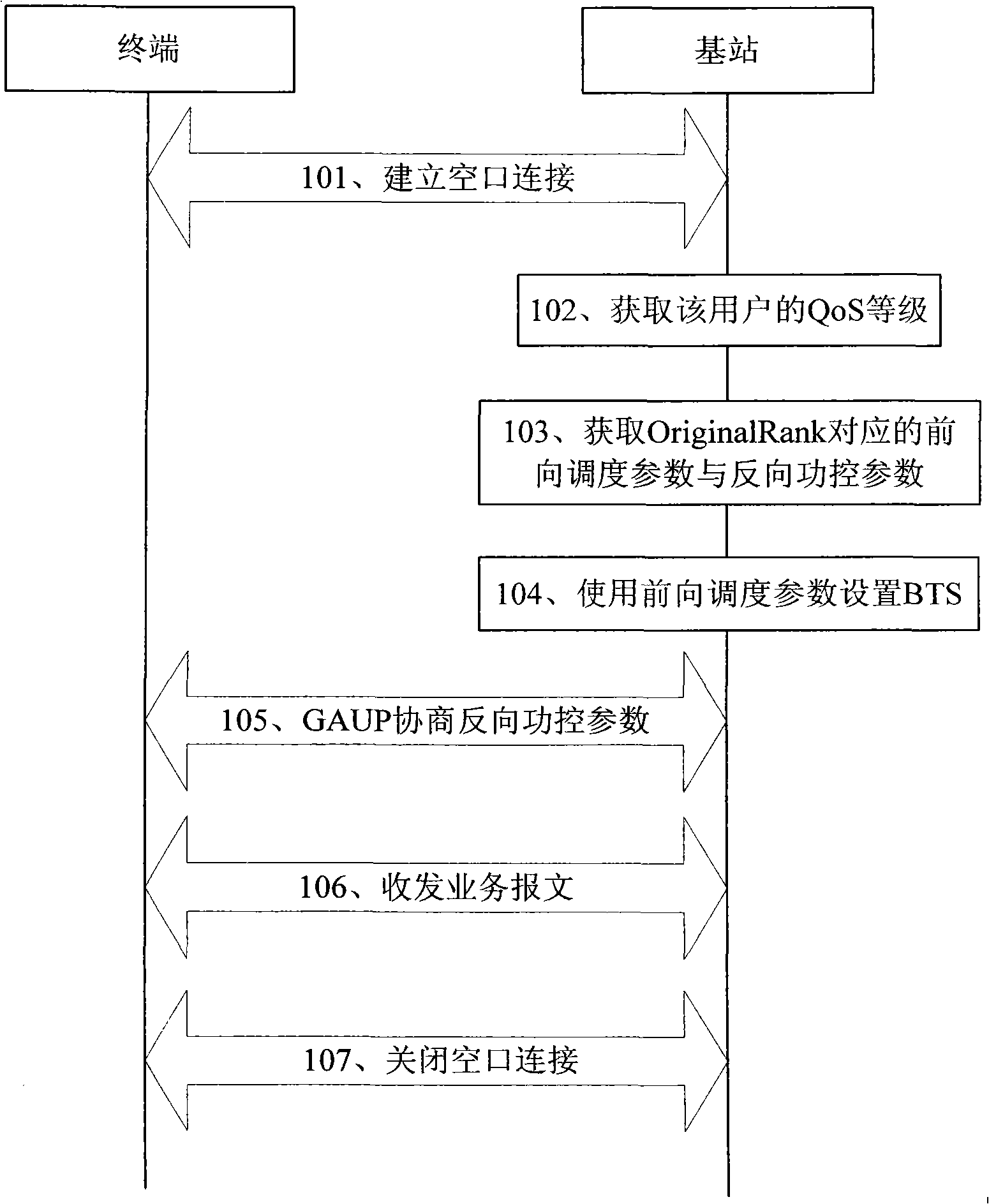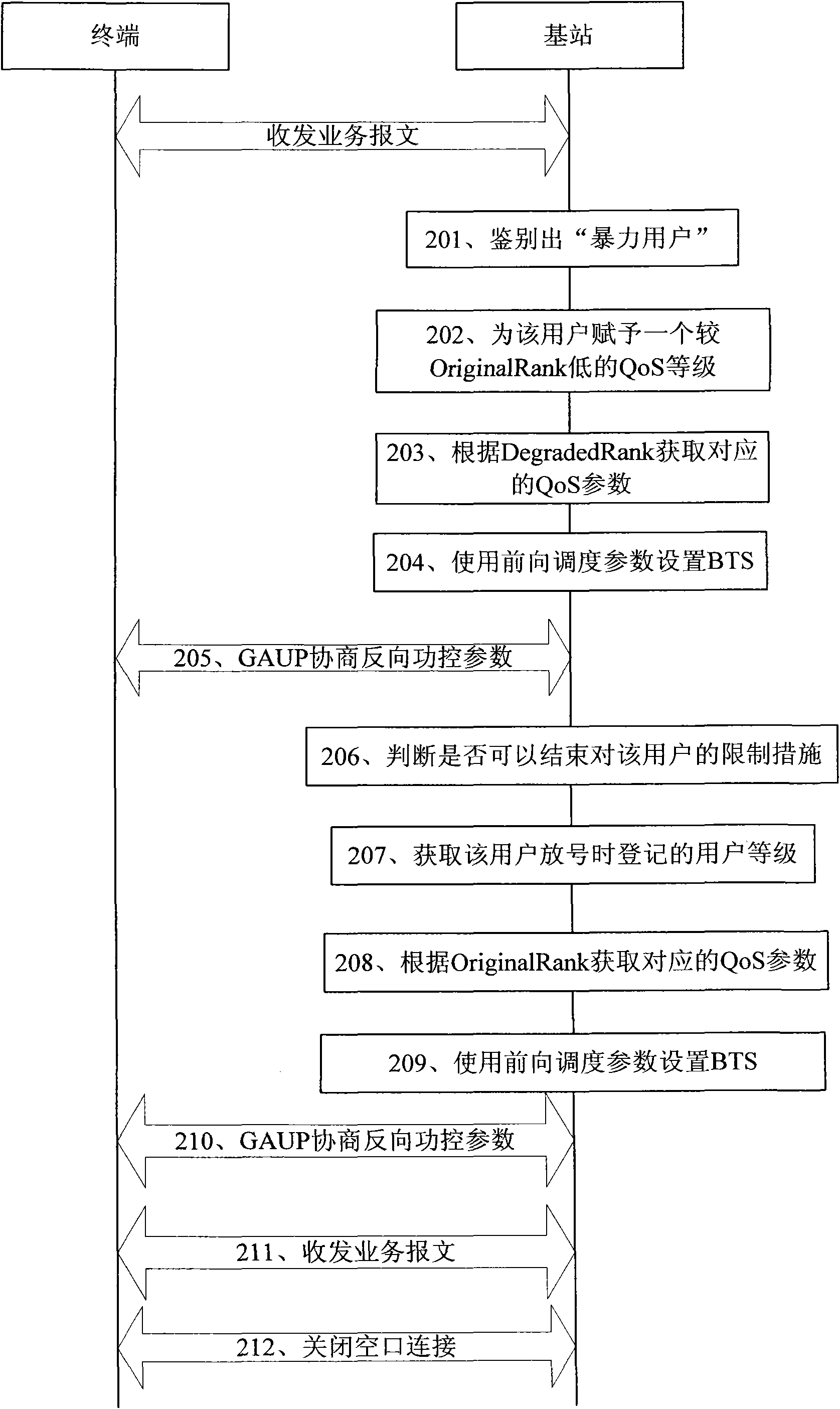Method and base station for balancing resource distribution
A resource allocation and base station technology, applied in the field of mobile communications, can solve problems such as unbalanced system resource allocation and difficult service for users of the same level
- Summary
- Abstract
- Description
- Claims
- Application Information
AI Technical Summary
Problems solved by technology
Method used
Image
Examples
Embodiment Construction
[0041] The core idea of the present invention is to identify "violent users" according to the user's behavior process of sending and receiving messages. When "violent users" are found, as a restrictive measure, the base station weakens the user's resource competitiveness by reducing the QoS level of the user. Under certain conditions, when the base station thinks that the restrictive measures can be cancelled, the downgraded users can be restored to the original QoS level.
[0042] The present invention will be described in detail below in conjunction with the accompanying drawings and specific embodiments, but not as a limitation of the present invention.
[0043] In the mobile communication system of this embodiment, the base station identifies "violent users" whose resource occupation exceeds a first predetermined value during service processing. There are various identification strategies that can be used to identify "violent users", such as "duration strategy", "traffic...
PUM
 Login to View More
Login to View More Abstract
Description
Claims
Application Information
 Login to View More
Login to View More - R&D
- Intellectual Property
- Life Sciences
- Materials
- Tech Scout
- Unparalleled Data Quality
- Higher Quality Content
- 60% Fewer Hallucinations
Browse by: Latest US Patents, China's latest patents, Technical Efficacy Thesaurus, Application Domain, Technology Topic, Popular Technical Reports.
© 2025 PatSnap. All rights reserved.Legal|Privacy policy|Modern Slavery Act Transparency Statement|Sitemap|About US| Contact US: help@patsnap.com



